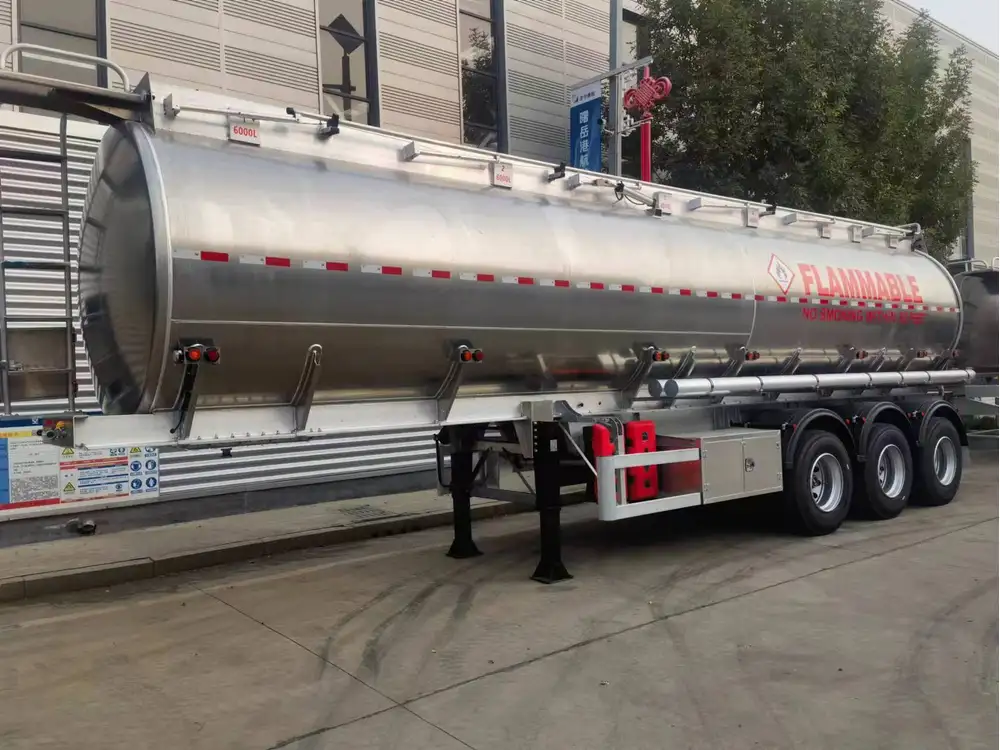Docking a semi-trailer is a fundamental skill in the trucking industry, essential for efficient loading and unloading processes. In this guide, we delve deeply into techniques, tips, and safety measures to ensure drivers can maneuver semi-trailers into loading docks with precision. Whether you’re a seasoned professional looking to refine your techniques or a novice starting, this article serves as a definitive resource.
Table of Contents
- Understanding the Basics of Docking a Semi-Trailer
- The Importance of Docking in Logistics
- Preparing for the Docking Process
- Techniques for Successfully Docking a Semi-Trailer
- A. Visual Techniques
- B. Physical Techniques
- Common Challenges and Solutions
- Safety Protocols When Docking a Semi-Trailer
- Technology Enhancements in Docking
- Conclusion
1. Understanding the Basics of Docking a Semi-Trailer
Docking a semi-trailer involves reversing the vehicle into a designated docking area, where a loading platform is located. It requires a combination of spatial awareness, control of the vehicle’s movements, and understanding of the trailer’s behavior. It is crucial to grasp the dimensions and weight distribution of your semi-trailer, which affects how it maneuvers. Familiarity with the truck’s size and characteristics is fundamental to execute a safe and efficient docking.

2. The Importance of Docking in Logistics
Efficient docking systems can significantly impact the productivity of distribution centers and logistics operations. When done correctly, the lining up of a truck with a loading dock minimizes wait times, optimizes space usage, and enhances the overall flow of goods from suppliers to end-users. Negotiating loading and unloading effectively ensures that routing schedules are adhered to, which is critical in an industry defined by deadlines and precision.
3. Preparing for the Docking Process
Before engaging in the docking process, drivers should perform several preparatory steps:
- Inspect the Vehicle: Conduct a thorough inspection of the semi-trailer, including brakes, lights, and tires, to ensure safe operation.
- Familiarize with Surroundings: Take time to scan the docking area. Look for potential obstacles, including pillars, other parked vehicles, or equipment that could hinder alignment.
- Plan the Approach: Determine the optimal path of approach. Understand how to maneuver into the dock, considering the layout of the yard and any potential traffic.
4. Techniques for Successfully Docking a Semi-Trailer

A. Visual Techniques
Mirrors and Blind Spots: Utilize side mirrors and rearview mirrors effectively. Continuously adjust mirrors to minimize blind spots. Use spotters if available to further assist in visualizing surrounding areas.
Alignment Indicators: Many docks feature guides or markings on the pavement. Align the back of the trailer with these indicators to assist in proper docking.
B. Physical Techniques
Angle of Approach: The angle at which you approach the dock is critical. Generally, a 45-degree angle makes it easier to align the trailer with the dock.
Speed Control: Employ slow, controlled movements—fast reactions can lead to misjudgement and accidental collisions. Speed should be adjusted based on the current conditions of the docking area.
Counter-Steering: As you begin to back the trailer, the back of the trailer will move in the opposite direction to your steering input initially. Anticipate this movement and counter-steer accordingly.
5. Common Challenges and Solutions

Challenge 1: Poor Visibility
Solution: Consider using additional lighting or reflective markers around the docking area. When possible, use a spotter to provide guidance.
Challenge 2: Tight Spaces
Solution: Practice narrow maneuvering in controlled environments before attempting to dock in tight spaces. Utilize trailer dolly wheels to assist with turning and maneuvering.
Challenge 3: Uneven Surfaces
Solution: Assess the ground conditions before docking. Avoid regions that are excessively sloped or uneven. If docking on a hill is unavoidable, adjust the truck’s position to compensate for the slope.

6. Safety Protocols When Docking a Semi-Trailer
Safety during the docking process cannot be overstated. Implement the following strategies to enhance safety:
- Vehicle Positioning: Set the parking brake before attempting to exit the vehicle.
- Wear Safety Gear: Use appropriate footwear and reflective vests when outside the vehicle.
- Monitor Traffic: Always remain vigilant concerning the movement of other vehicles in the area.
- Communicate: Use hand signals or two-way radios with ground personnel when operating in busy docks.
7. Technology Enhancements in Docking
The advent of technology in the trucking industry has significantly enhanced the docking process:
Backup Cameras and Sensors: Today’s semi-trailers often come equipped with backup cameras and proximity sensors that give drivers better visibility and detect obstacles that might not be visible through mirrors alone.
GPS Docking Systems: Some advanced logistics companies utilize GPS mapping and docking systems that automatically guide drivers during the docking process, reducing the potential for errors.
Data Analytics: Analytical tools can forecast peak times for loading and unloading and help organizations manage their operations more efficiently.
8. Conclusion
Mastering the art of docking a semi-trailer is an invaluable skill that enhances logistics operations and guarantees timely delivery of goods. The techniques discussed above, coupled with a firm understanding of safety protocols and available technologies, equip drivers with the knowledge needed to dock thoughtfully and effectively.
Forging a strong commitment to continuous learning and improvement is essential, as the logistics landscape continues to evolve. By adhering to the best practices outlined in this guide, drivers will not only improve their docking efficiency but also contribute positively to the overall productivity of their operational environments.
Utilize every opportunity to practice and seek feedback, as each experience will further refine your skills and enhance your confidence, transforming the docking process from a necessary task into a testament of professional competency.



